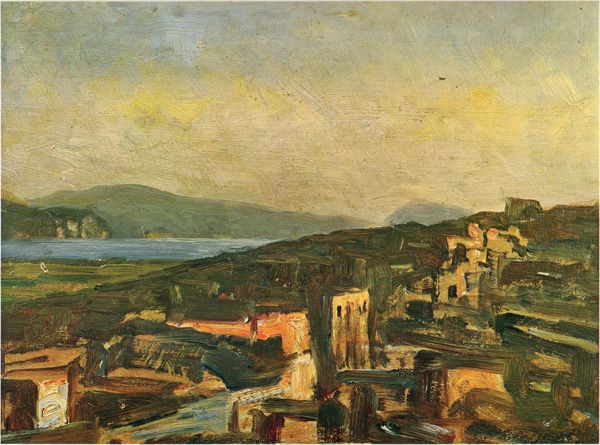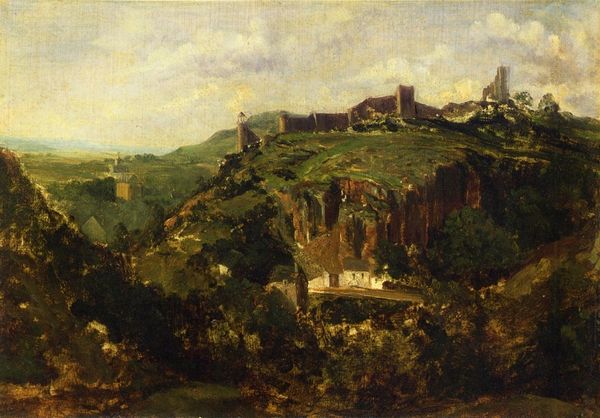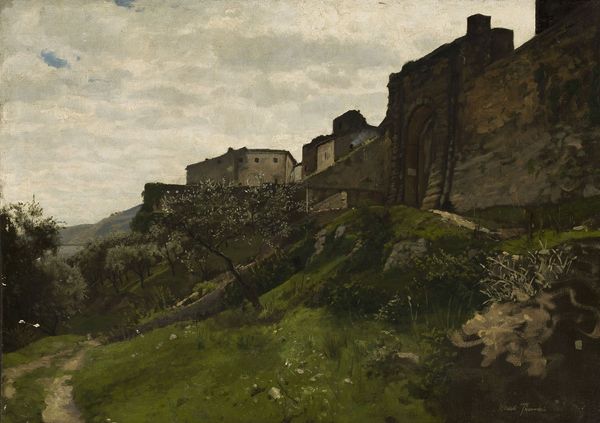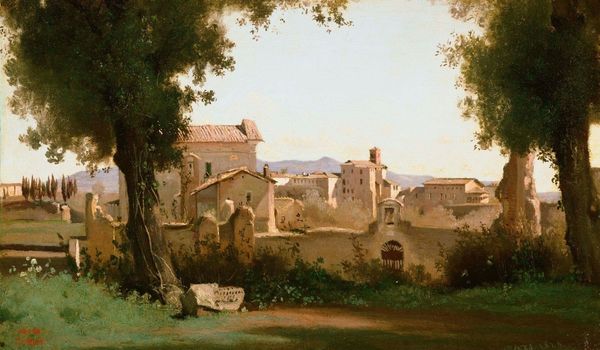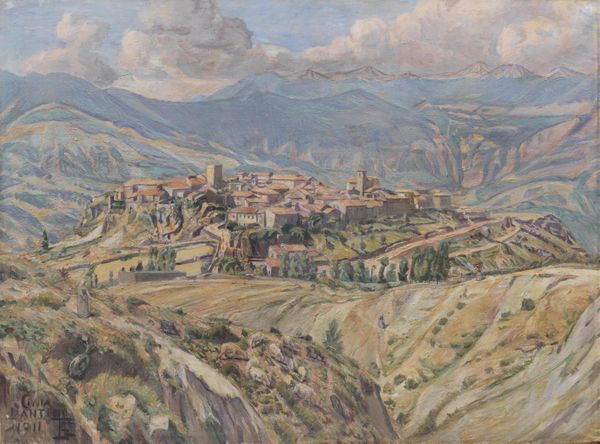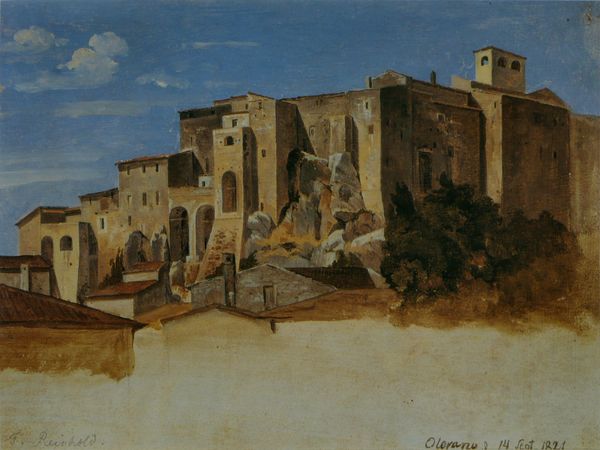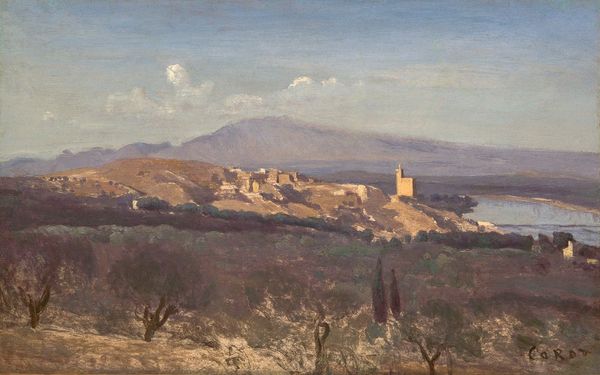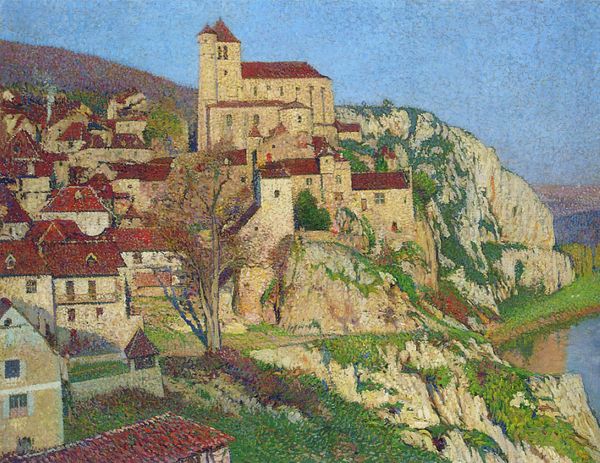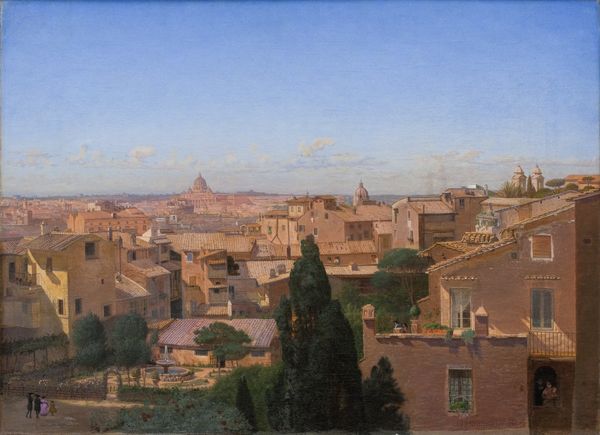
oil-paint
#
sky
#
oil-paint
#
landscape
#
house
#
impressionist landscape
#
oil painting
#
romanticism
#
cityscape
#
genre-painting
#
building
Copyright: Public domain
Théodore Rousseau's "A Town, Thiers" presents us with a dense and layered composition, constructed through earthy tones and textured brushwork. Note the arrangement of buildings and landscape elements. They are organized into stacked horizontal bands that recede into the distance, creating a sense of depth while maintaining a flattened, almost tapestry-like surface. Rousseau was a key figure in the Barbizon School, and his formal choices reflect a broader shift towards realism and a focus on direct observation of nature. The rough brushstrokes and muted palette emphasize the materiality of paint, drawing attention to the physical act of painting itself. It is through the interplay of horizontal and vertical lines that Rousseau imposes a structural order onto the apparent chaos of nature, inviting us to consider how landscape can be both represented and re-presented. The painting challenges traditional notions of landscape as a picturesque vista. Instead it embraces a more immediate and subjective experience of place. It’s a site where the formal qualities of art intersect with the observer’s interpretation, fostering ongoing dialogue.
Comments
No comments
Be the first to comment and join the conversation on the ultimate creative platform.
